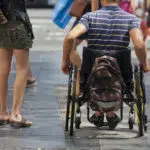Celebrated annually on March 26, Epilepsy Awareness Day, or Purple Day, was created to increase the public’s understanding of this brain disorder and to eliminate the fear and stigma surrounding it. With over 3.5 million people diagnosed with epilepsy in the U.S. and over 50 million worldwide, it is likely you know someone living with the day-to-day challenges epilepsy brings. The good news is epilepsy can be easily managed if diagnosed and treated correctly, so awareness and research are important. Join one of the grassroots campaigns to raise awareness in your community today!
When is Epilepsy Awareness / Purple Day 2026?
Epilepsy Day is observed every year on March 26.
History of Epilepsy Awareness / Purple Day
Cassidy Megan from Nova Scotia, Canada, founded Epilepsy Awareness Day with the first event held on March 26, 2008. Motivated by her own diagnosis and struggles of living with epilepsy, she realized the importance of everyone understanding this common neurological disorder. She created an avenue for people to learn, engage, and support the public’s education of epilepsy as well as dispel the myths and fears surrounding it.
Epilepsy is caused by electrical disturbances in the brain resulting in seizures of various types. It can be a scary condition to people who do not understand what is going on, which has led to many unnecessary assumptions and even laws about the disease and the capabilities of those who live with it. It’s the fourth most common neurological disorder after migraines, strokes, and Alzheimer’s. Estimates show that one in 26 Americans will develop epilepsy at some point in their life.
In 2009, the Anita Kaufmann Foundation partnered with the Epilepsy Association of Nova Scotia to launch Purple Day, bringing more collective attention and structured campaigns to the purpose of the day in the U.S. and internationally. Over 100,000 students, 95 workplaces, and 116 politicians participated in Purple Day events that same year.
The Anita Kaufmann Foundation trademarked Purple Day in 2011 and it has continued to expand its reach since.
Epilepsy Awareness / Purple Day timeline
The earliest known medical texts detailing the signs, symptoms, and types of seizures of what we now know as epilepsy are written.
Hippocrates is the first person to suggest epilepsy as a medically treatable disease of the brain.
Bromide is first released as an effective medication for controlling seizures.
Bromide is first released as an effective medication for controlling seizures.
The Anita Kaufmann Foundation sets a Guinness World Record on Purple Day by facilitating the largest ever training session on epilepsy.
By The Numbers
50 million – the number of people in the world who have epilepsy.
80% – the percentage of people with epilepsy who reside in low- or middle-income countries.
70% – the percentage of people with epilepsy who can be properly treated.
3x – the increased risk of premature death in epileptic people.
¾ – the total number of people with epilepsy living in low-income countries who do not receive proper treatment.
25% – the percentage of epilepsy cases that are preventable.
Epilepsy Awareness / Purple Day FAQs
How many different types of seizures exist?
Over 40 different types of seizures have been identified. Not all seizures include convulsions or jerky body movements. Instead, some are classified as ‘vacant’ where the person is in a trance or a confused state.
How is epilepsy diagnosed?
There is no singular test used to diagnose epilepsy. Among the ways to diagnose epilepsy are: electroencephalogram (EEG), magnetic resonance imaging (MRI), CT scan, blood-glucose testing, along with electrolyte- and calcium testing.
What causes epilepsy?
Frequently, epilepsy presents itself after a brain injury or trauma, stroke, or a brain infection. However, in over 50% of epilepsy cases, the cause is unknown.
How to Observe Epilepsy Awareness / Purple Day
Participate in a local or national event
More and more cities are holding events in observance of Epilepsy Awareness Day, so check out what is going on in your area and encourage friends and family to get involved. The motto is ‘Anyone with a brain can have a seizure and anyone with a brain can help those with epilepsy.’ So, that means YOU can help today!
Wear purple
Today’s the day to break out your favorite purple shirt, shoes, or pair of pants! Don’t stop with the basics, you can sport your support with jewelry, a hat, a tie, or other fun accessories.
Become a Purple Day Ambassador
If you don’t find an event planned for Epilepsy Awareness Day in your city, apply to be a Purple Day Ambassador through the Anita Kaufmann Foundation. Purple Day Ambassadors spearhead grassroots events in their workplace, school, church, and the community at large, not only on Epilepsy Awareness Day but other days as well! To apply to be an ambassador and find fun and unique ideas for your initiative, check out www.purpledayeveryday.org.
5 Ways To Help Someone Having A Seizure
Prevent injuries
If someone is starting to have a seizure or is in the process of having one, remove sharp objects near them, remove eyeglasses if they wear them, and place a pillow or your leg under their head, if possible.
Prevent choking hazards
Attempt to turn the person onto their side so that they do not choke on fluids and ensure there is nothing in their mouth.
Time the seizure
Note how long the seizure lasted and inform the person and medical personnel at the appropriate time.
Call for help
If the seizure lasts more than five minutes or injuries are suffered during the seizure, it may be best to call an ambulance, otherwise, once the seizure is over and the person is coherent, they may also need assistance in calling loved ones.
Remain calm
Witnessing a seizure can be scary but, remember, most seizures will stop on their own within a few minutes — knowing how to assist someone will allow you to stay focused and support them in a meaningful way.
Why Epilepsy Awareness / Purple Day is Important
It raises understanding
Even though the number of Americans living with epilepsy is greater than those living with an autism spectrum disorder, multiple sclerosis, and cerebral palsy combined, the funding for epilepsy is a small fraction of the funding that goes into research for the other conditions. Epilepsy Awareness Day gives this condition the much-needed attention it warrants.
It eliminates fear and stigma
Education has the ability to eliminate fear and prejudice. People living with epilepsy, particularly those in less developed countries, likely experience stigma and discrimination, which can be more burdensome to navigate than the disease itself. Epilepsy Awareness Day contributes greatly to the enlightenment of people around the world.
We love purple!
Almost 40% of people say their favorite color is purple. Some sources even say that people who are passionate about purple make great humanitarians and are quick to help those in need — perfect characteristics to serve as an ambassador in epilepsy education and support!
Epilepsy Awareness / Purple Day dates
| Year | Date | Day |
|---|---|---|
| 2026 | March 26 | Thursday |
| 2027 | March 26 | Friday |
| 2028 | March 26 | Sunday |
| 2029 | March 26 | Monday |
| 2030 | March 26 | Tuesday |





















